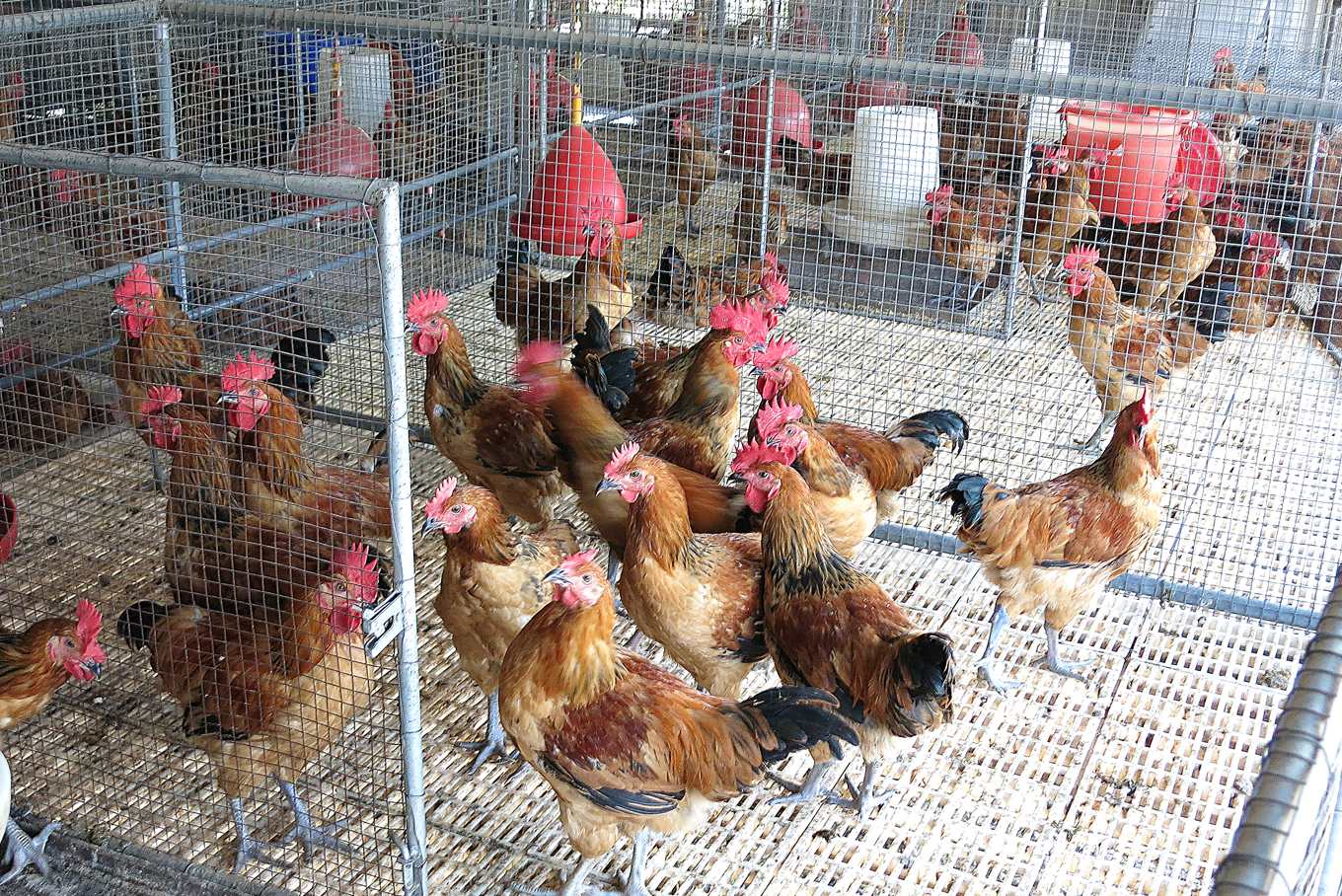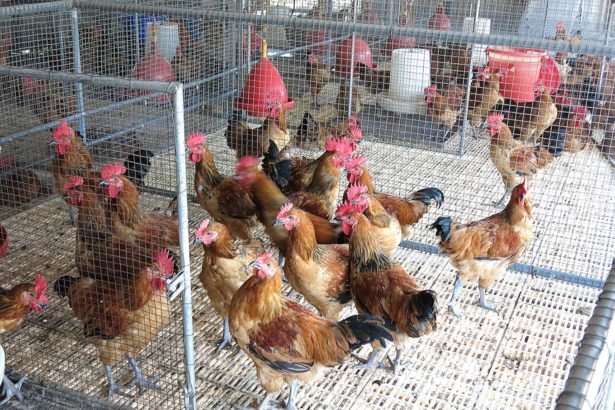The local chicken that eats rice tastes better! The domestic rice feed is promoted by the Animal Test Institute, the breast meat of chicken and duck is soft, tender and juicy, and the pork is also delicious.
Share16 + 1 Tweet EmailShares 16
The domestic feed self-sufficiency rate is only 5%, and 4.2 million metric tons of corn are needed to be imported every year, while the self-sufficiency rate of domestic rice is as high as 107.9%, which leads to the explosion of public grain every year. The Animal products Research Institute of the Council of Agriculture (referred to as the "Animal testing Institute") tried to replace feed corn with domestic rice and fed seven kinds of livestock and poultry, including chickens, ducks, geese and pigs, and found that meat pigs and native chickens that ate rice had become more delicious! Li Zongyu, an assistant researcher at the Animal testing Institute, points out that brown rice increases the unit unsaturated fatty acids in meat. "Chicken breast meat is softer and juicy, which improves the flavor of meat."
Chuang Laoda, deputy director of the Agriculture and Food Administration, said that the country maintains a safety stock of about 400000 tons of public grain every year for emergency supplies and war preparedness, while the rest is sold through various channels and sold first at high value. for example, export, student and military meals, legal grain, processing rice, and so on. Is public grain encouraged to be used for feed purposes? He stressed that "the use of aged rice as feed needs perfect management methods in order to prevent it from flowing back into the edible rice market and disrupt the market."

。(照片提供/畜试所).jpg)
When brown rice was fed instead of 100% corn, the egg yolk produced by laying hens was lighter (pictured on the right). (photo courtesy of / Animal Laboratory)
"Taichung Indica 17" has high yield and low production cost, so it is especially suitable for feed.
It is feasible for rice to become an alternative feed material for corn, but does it have to be "Taichung Indica 17"? Lai Mingxin, a researcher at the Agricultural examination Institute, who is responsible for the breeding of special varieties of fodder rice, explains that corn is the source of carbohydrates in formula feed, and so is rice. therefore, the difference in protein and amino acid content between different varieties of rice is not the main factor for screening as feed rice, and it is no problem to use public grain rice, which accounts for the majority of "japonica rice."
"the effect of using any variety of rice as feed is the same, but the lower the production cost, the higher the yield and strong disease resistance." Therefore, the rice feed experiment was carried out with "Taichung Indica 17".
Public grain Chen rice plus working rice feed, with price advantage
While improving the feed self-sufficiency rate, we also look forward to opening up the diversified consumption market of rice. In recent years, due to the impact of changes in eating habits and low-cost imported rice, domestic rice has generally exceeded the demand for domestic rice. in 106 years, the average per capita consumption of rice was 45.4kg, nearly 13 kg less than that of 20 years ago, and 200000 tons of fresh rice was sold in China last year. Japan, which is facing the same situation as Taiwan, has developed "rice feeding pigs" and created distinctive poultry products in recent years, which have also been welcomed by the consumer market.
In contrast, if Taiwan wants to promote "rice feed" in an all-round way, it must first solve the problem of cost. Lai Mingxin pointed out that the production cost of domestic grain is already high, and since varieties suitable for the production of fodder rice have not yet been selected, it may be difficult to compete with the average price of imported corn of 7-9 yuan per kilogram. Only by using sold public grain aged rice to make "rice feed" and matching relevant subsidies, can it be possible that the use cost will not fall too large with corn feed, and can also help reduce the storage pressure of public grain rice.
Although the animal testing institute has greatly promoted the production of rice to replace imported feed corn, no feed industry has developed "domestic rice feed" at this stage. Li Chunfang explained that the production and management of domestic feed rice is not yet mature and is still in the experimental period. if we want to establish a perfect rice feeding livestock and poultry industry, we must develop special varieties of feed rice in order to stabilize the supply and reduce the cost of use. at present, it is suggested that public grain that has been stored for too long, poor quality and unsuitable for further processing should be used as feed, expand the diversified use of Chen rice, and also solve the problem of degeneration of public grain.
Agricultural sub-raw materials are also available to improve the domestic feed self-sufficiency rate.
In addition to rice, the animal laboratory also promotes rich feed sources, such as using 12% corn wine dregs instead of corn and soybean meal, which not only does not affect the laying rate of laying hens, but also improves the color of egg yolk; whole-plant rice silage can also be used as a good feed source for lactating sheep In addition, feeding meat goats with rice by-products (rice bran, coarse bran) and soybean meal can not only save the feed cost of livestock farm, but also effectively reduce the treatment cost of agricultural waste, and further improve the domestic feed self-sufficiency rate.
Pig farmers: the scheme is feasible, but only if there is a stable source of raw materials can it be used for a long time.
In response, Su Zeng, an operator of the Central Animal Farm, says that pigs have a keen sense of smell and like to eat things that they are used to. As for the practice of replacing corn with rice, he believes that as long as the feed formula is adjusted so that the nutrition needed by pigs can be achieved, the growth performance and meat slaughter quality should not have much impact. "Rice has a lower protein content than corn, so it is necessary to add a little more soybean meal to supplement the formula."
"stable supply of raw materials" is the key to implementation. He further explained that it is convenient for foreign corn to buy, and if you want to obtain rice with a price similar to that of corn, you have to wait for public grain Chen rice, which is publicly invited by the government every year. "but the quantity released every year is unstable. If the formula is adjusted and there is not enough public grain, then the feed habits of pigs will have to be changed." he believes that feed raw materials with competitive prices and stable supply are the first choice for pig farmers to use.
The Agriculture and Food Department: public grain digestion should give priority to the highest benefit, and feed should be the last choice.
In this regard, Zhuang Laoda, deputy director of the Agriculture and Food Administration, said that the domestic safety stock of public grain is about 400000 tons a year, which is used for emergency supplies and war preparedness, while the rest will be sold through various channels and sold first at high value. For example, export, student and military meals, legal grain, processing rice, etc., in addition, can also be released as feed for mashing brown rice The allocation price is based on a 10% discount on the average price of corn imported from Kaohsiung Port that year. Last year, for example, the average competitive price sold was between NT $6 and NT $8. After winning the bid, the feed factory will use it as raw material for livestock feed. "but it is the last choice to use it as feed. Public grain digestion should be dealt with in the most cost-effective way."
In the face of the current problem of overproduction of domestic rice, Zhuang explained that the current policy is to reduce the area of rice, promote the conversion plan, and hope to reduce it from the current 270000 hectares to 240000 hectares, and encourage farmers to switch to crops other than rice. Therefore, in terms of the supply of "rice feed" raw materials, he believes that it is not to add additional planting area of feed rice to replace existing rice, but to digest it from the existing stock.
However, he also warned that the use of Chen rice as feed requires perfect management methods in order to prevent the return to the edible rice market and disrupt the market situation. With regard to the supply mechanism and price coordination of feed rice, he stressed that he would further discuss with the relevant units on how to improve the self-sufficiency rate of feed and help the elimination of public grain.
Share16 + 1 Tweet EmailShares 16
- Prev

The local chicken that eats rice tastes better! Domestic rice feed developed by the Animal Test Institute, chicken and duck breast meat is soft, tender and juicy, and pork is also delicious.
The local chicken that eats rice tastes better! Domestic rice feed developed by the Animal Test Institute, chicken and duck breast meat is soft, tender and juicy, and pork is also delicious.
- Next

Taoyuan Vegetable Production and Marketing Group signs cooperation with Marshall Formosa Group
Taoyuan Mayor Zheng Wencan went to the third class of Bade District Vegetable Production and Marketing Class yesterday (12) afternoon to attend the signing ceremony of "Taoyuan City Bade Vegetable Production and Marketing Class × Marshall Formosa Group to Promote Taoyuan Agricultural Special Products Cooperation Letter". Mayor Zheng...
Related
- A course of planting techniques and methods on how to grow carrots
- How to plant the latest tulips?
- Is it better to pick tea in the morning or in the afternoon? When is the best time for tea to be picked? what is the third or fifth tea?
- Launch Yuanxiao Happy combination Haocha + Tea Yuan healthy Taste
- Penghu Tourism "Fireworks 20 Parade with You"
- 2022 West Lake Happiness holds "Digital Revitalization Voucher" and draws iphone13 and laptop.
- Banqiao Fuzhou social houses are designed to change start-up combined with police elimination to create a safe and livable environment
- The convenient measure of "mechanical weeding" in Xinbei has been abused and the Agriculture Bureau has imposed heavy penalties on the illegal land consolidation.
- Changgeng University Joins Hands with Four Memory Factories to Rescue Memory Talent Shortage
- The list of Taiwan's top 100 MVP managers is listed by the Director-General of the Farmers' Association of Sanxia District.

